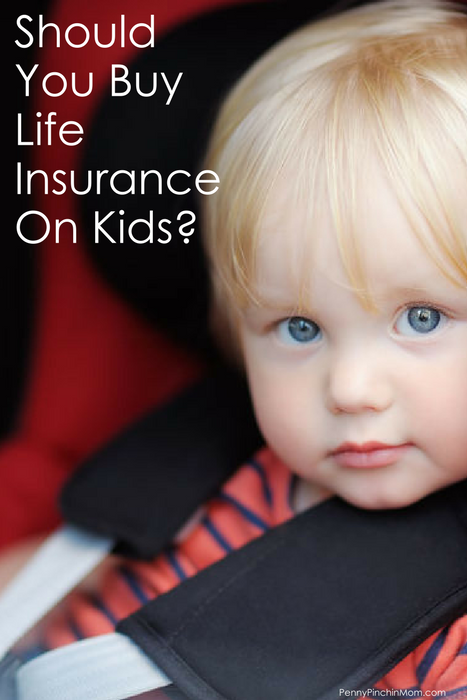I’ve got three kids. And, we have life insurance on all of them. For us, it made sense. After all, my sister had a terminal illness and my mom knew the outcome. Being able to purchase a policy on her helped her financially when that time came.
However, if this is a topic you’ve not thought much about, it could leave you with more questions than answers. I’m thrilled to have Elizabeth Renter with NerdWallet share this with all of you. Hopefully she helps answer some of the questions you might have when it comes to your kids and life insurance.
You’ve probably seen the fliers with persuasive language or heard the TV sales pitches with the cute cereal-box baby, but buying life insurance for a child may not be a wise way to spend your money now or plan for the future.
Some 20% of U.S. parents and grandparents in a 2015 survey said they have taken out life insurance policies on their children or grandchildren, according to industry groups LIMRA and Life Happens. Buying your own life insurance is a no-brainer — it could provide for your family in case of your death. But purchasing life insurance for children is a personal and more difficult decision, like so many choices that parents face. For many, it makes more sense to put that money elsewhere.
Before buying life insurance on a child, ask yourself the following questions.
1. What are your financial priorities?
Life insurance on a child should be pretty far down the list of financial priorities. Take stock — an emergency fund, retirement and college savings, and disability insurance for those who work in the household should typically come first.
2. Do you have life insurance?
Life insurance would provide a financial safety net for your child should you die. Paying for this coverage for you and a spouse is far more important than buying life insurance on a child.
3. Do you understand the insurance choices for a child?
There are two basic options for getting your child covered: term life or permanent life insurance.
If you are buying term life insurance on yourself, you could add life insurance for your child as a rider. Term life insurance lasts for a specific amount of time, such as 20 or 30 years. The policy would pay out if you (or your child, if you have a rider) die within the term of the policy.
Permanent coverage, such as whole life insurance, is designed to last for the life of the insured as long as premiums are paid. Your child’s policy can stand alone, not as a rider, and could build cash value over time. For this reason, it is often marketed as an investment vehicle and a source of money the child could tap into later in life. This option is the more expensive of the two choices.
4. Is there any benefit to your child by getting life insurance now?
You may have heard that buying a policy on your child now will “protect their insurability.” The general sales pitch is that it’s easiest (and least expensive) to get coverage when you’re young and healthy.
That’s true. However, odds are they’ll still be healthy enough to get affordable coverage well into adulthood — for example, at age 30, nonsmokers in good health can get $500,000 in term coverage for 20 years for less than $300 a year.
5. Are you contributing to a college savings plan or other savings for your child?
One benefit of whole life insurance is that the policyholder can borrow against it when they are older. It builds cash value, which grows tax-deferred. Your child could potentially borrow against the cash value for college tuition or a new home, but there are other strategies, such as a 529 college plan or other savings account, that may have greater returns.
As a parent, it’s important to look at the reasons you’re thinking of buying life insurance for your child and whether there is a more cost-effective way to reach your goals.
Elizabeth Renter is a staff writer at NerdWallet, a personal finance website. Email: elizabeth@nerdwallet.com. Twitter: @ElizabethRenter.
